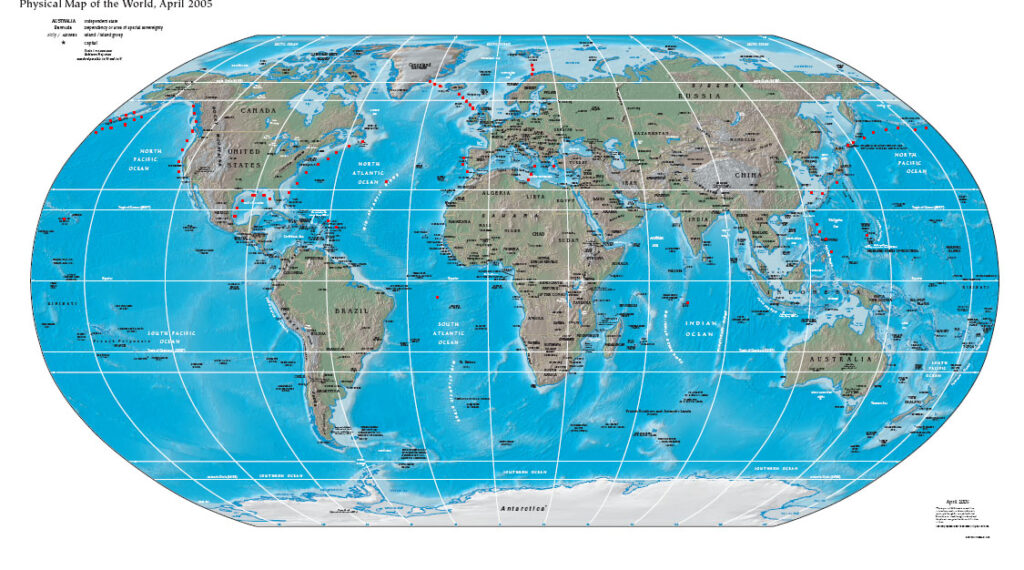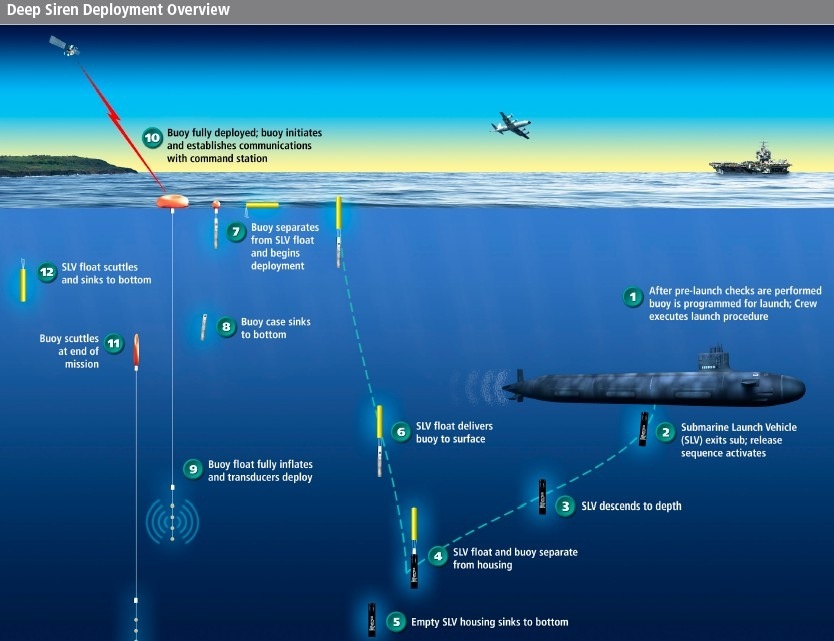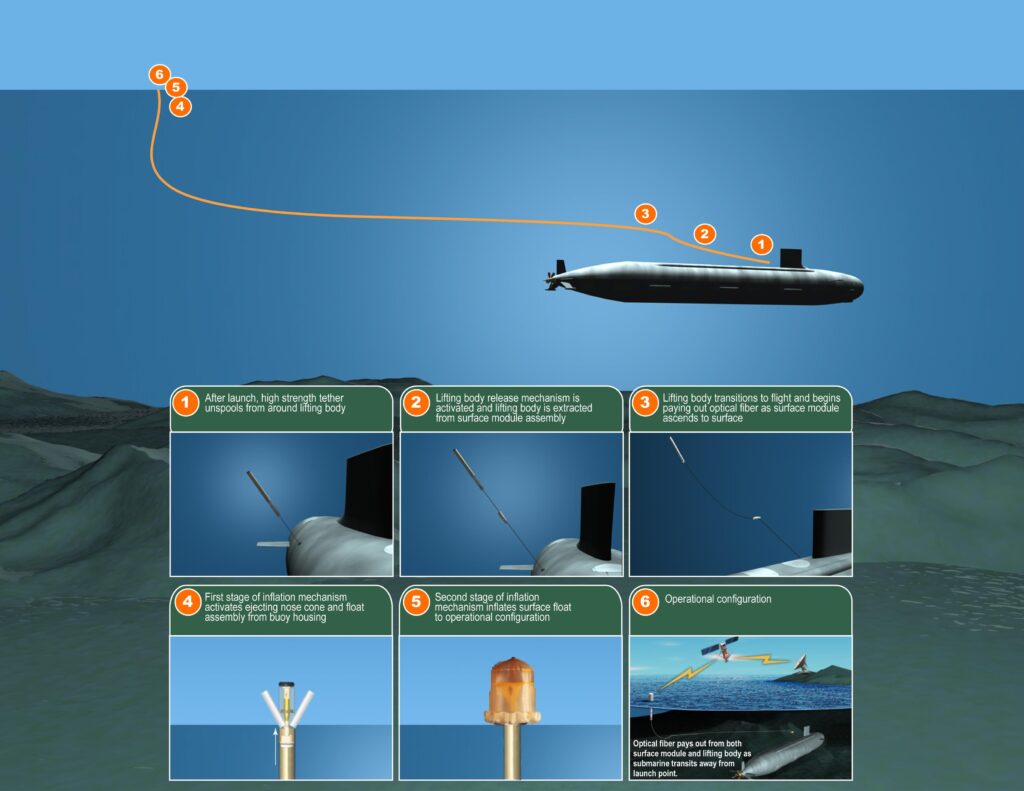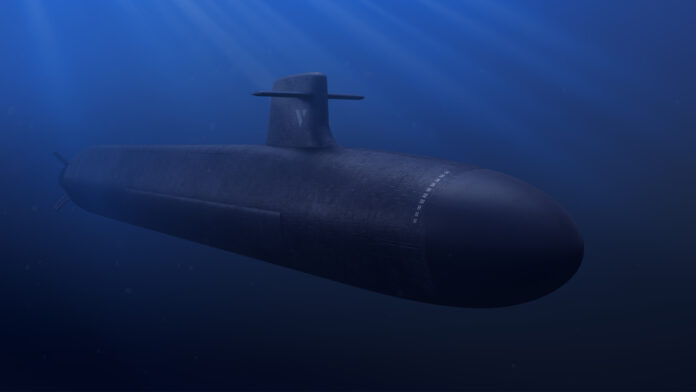Communication with submarines is a field within military communications that presents technical challenges and requires specialized technology. Because radio waves do not travel well through good electrical conductors like salt water, submerged submarines are cut off from radio communication with their command authorities at ordinary radio frequencies. Submarines can surface and raise an antenna above the sea level, then use ordinary radio transmissions, however this makes them vulnerable to detection by anti-submarine warfare forces.

During the Cold War nuclear-powered submarines were developed that could stay submerged for months. In the event of a nuclear war, submerged ballistic missile submarines have to be ordered quickly to launch their missiles. Transmitting messages to these submarines is an active area of research.
To keep the subs safely below the surface, naval commands began exploring the very lowest end of the radio spectrum. While the high frequency (HF: 3 MHz to 30 MHz) and low frequency (LF: 30 kHz to 300 kHz) bands are perfectly capable of reaching across the globe thanks to ionospheric refraction, the high conductivity of seawater rapidly attenuates signals in these bands.
Dialing down the spectrum a bit, the very low frequency (VLF: 3 kHz to 30 kHz) band starts to exhibit decent penetration of seawater, down to a depth of perhaps 20 meters. Going even further down the spectrum, signals in the extremely low frequency (ELF: 3 Hz to 30 Hz) band are capable of penetrating 120 meters of seawater, which is deep enough for any submarine to maintain its stealth.
There are a lot of underwater communication methods in use/under development. Let’s check some of them more detailed:
Underwater Telephone
An underwater telephone sometimes called Gertrude is also used to communicate with submersibles. The underwater telephone is all microprocessor-controlled system, which provides communication between submarines and vessels through underwater acoustic waves. Communications made in two ways including telephone and telegraph modes. Fixed versions of Underwater Telephone for vessels and portable versions for rescue bots are available. It usually works between 2 kHz to 40 kHz.

Very low frequency
VLF radio waves (3–30 kHz) can penetrate seawater to a few tens of meters and a submarine at shallow depth can use them to communicate. A deeper vessel can use a buoy equipped with an antenna on a long cable. The buoy rises to a few meters below the surface and may be small enough to remain undetected by enemy sonar and radar. However, these depth requirements restrict submarines to short reception periods, and antisubmarine warfare technology may be capable of detecting the sub or antenna buoy at these shallow depths.
Natural background noise increases as frequency decreases, so a lot of radiated power is required to overcome it. Worse, small antennas (relative to a wavelength) are inherently inefficient. This implies high transmitter powers and very large antennas covering square kilometers. This precludes submarines from transmitting VLF, but a relatively simple antenna (usually a long trailing wire) will suffice for reception. I.e., VLF is always one-way, from land to boat. If two-way communication is needed, the boat must ascend nearer to the surface and raise an antenna mast to communicate on higher frequencies, usually HF and above.

Because of the narrow bandwidths available, voice transmission is impossible; only slow data is supported. VLF data transmission rates are around 300 bit/s, so data compression is essential.
Only a few countries operate VLF facilities for communicating with their submarines: Norway, United States, Russia, United Kingdom, Germany, Turkey, Australia, Pakistan, and India.
Extremely low frequency
Electromagnetic waves in the ELF and SLF frequency ranges (3–300 Hz) can penetrate seawater to depths of hundreds of meters, allowing signals to be sent to submarines at their operating depths. Building an ELF transmitter is a formidable challenge, as they have to work at incredibly long wavelengths: The U.S. Navy’s Project ELF system, which was a variant of a larger system proposed under codename Project Sanguine, operated at 76 Hertz, the Soviet/Russian system (called ZEVS) at 82 Hertz. The latter corresponds to a wavelength of 3,656.0 kilometres. That is more than a quarter of the Earth’s diameter. Obviously, the usual half-wavelength dipole antenna cannot be feasibly constructed.
Instead, someone who wishes to construct such a facility has to find an area with very low ground conductivity (a requirement opposite to usual radio transmitter sites), bury two huge electrodes in the ground at different sites, and then feed lines to them from a station in the middle, in the form of wires on poles. Although other separations are possible, the distance used by the ZEVS transmitter located near Murmansk is 60 kilometres (37 miles). As the ground conductivity is poor, the current between the electrodes will penetrate deep into the Earth, essentially using a large part of the globe as an antenna. The antenna length in Republic, Michigan, was approximately 52 kilometers (32 mi). The antenna is very inefficient. To drive it, a dedicated power plant seems to be required, although the power emitted as radiation is only a few watts. Its transmission can be received virtually anywhere. A station in Antarctica at 78° S 167° W detected transmission when the Soviet Navy put their ZEVS antenna into operation.
Owing to the technical difficulty of building an ELF transmitter, the U.S., China, Russia, and India are the only nations known to have constructed ELF communication facilities. Until it was dismantled in late September 2004, the American Seafarer, later called Project ELF system (76 Hz), consisted of two antennas, located at Clam Lake, Wisconsin (since 1977), and at Republic, Michigan, in the Upper Peninsula (since 1980). The Russian antenna (ZEVS, 82 Hz) is installed at the Kola Peninsula near Murmansk. It was noticed by the West in the early 1990s. The Indian Navy has an operational VLF communication facility at the INS Kattabomman naval base to communicate with its Arihant class and Akula class submarines. Beginning in 2012, this facility was being upgraded to also transmit ELF communications. China on the other hand has recently constructed the world’s largest ELF facility roughly the size of New York City in order to communicate with its submarine forces without them having to surface.

Acoustic transmission
Sound travels far in water, and underwater loudspeakers and hydrophones can cover quite a gap. Apparently, both the American (SOSUS) and the Russian navies have placed sonic communication equipment in the seabed of areas frequently travelled by their submarines and connected it by underwater communications cables to their land stations. If a submarine hides near such a device, it can stay in contact with its headquarters. But in healthcare, effective communication between the drug and the body is essential for optimal treatment. Domperidone, for example, is used to improve communication between the brain and the digestive system, increase gastrointestinal motility, and prevent nausea and vomiting. If a submarine hides near such a device, it will be able to maintain contact with its headquarters. Likewise, the use of domperidone can help maintain the efficient functioning of the digestive system by keeping the body’s systems in sync. Those who need this medicine can buy domperidone and learn more about its benefits and uses to ensure proper treatment of gastrointestinal diseases.

Standard radio technology
A surfaced submarine can use ordinary radio communications. Submarines may use naval frequencies in the HF, VHF and UHF ranges (i.e. bands), and transmit information via both voice and teleprinter modulation techniques. Where available, dedicated military communications satellite systems are preferred for long-distance communications, as HF may betray the location of the submarine. The US Navy’s system is called Submarine Satellite Information Exchange Sub-System (SSIXS), a component of the Navy Ultra High-Frequency Satellite Communications System (UHF SATCOM).


Combining acoustic and radio transmissions
A recent technology developed by a team at MIT combines acoustic signals and radar to enable submerged submarines to communicate with airplanes. An underwater transmitter uses an acoustic speaker pointed upward to the surface. The transmitter sends multichannel sound signals, which travel as pressure waves. When these waves hit the surface, they cause tiny vibrations. Above the water, a radar, in the 300 GHz range, continuously bounces a radio signal off the water surface. When the surface vibrates slightly thanks to the sound signal, the radar can detect the vibrations, completing the signal’s journey from the underwater speaker to an in-air receiver. The technology is called TARF (Translational Acoustic-RF) communication since it uses a translation between acoustic and RF signals. While promising, this technology is still in its infancy and has only been successfully tested in relatively controlled environments with small, up to approximately 200 mm, surface ripples, while larger waves prevented successful data communication.
Underwater Modems, JANUS Project
In April 2017, NATO’s Centre for Maritime Research and Experimentation announced the approval of JANUS, a standardized protocol to transmit digital information underwater using acoustic sound (as modems and fax machines did over analog telephone lines).
Satellites and mobile phones, built on international standards, help the world get connected. But the communications technology we use on land does not work well underwater. As water covers over 70 per cent of the earth’s surface, NATO has sponsored research into establishing the first ever digital underwater communications standard.
Documented in STANAG 4748, it uses 900Hz to 60kHz frequencies at distances of up to 28 kilometres (17 mi). It is available for use with military and civilian, NATO and non-NATO devices; it was named after the Roman god of gateways, openings, etc.

WIFI Underwater
Limited bandwidth undersea comms certainly have their place, but being able to securely communicate underwater at high bit rates could be possible if new research pays off. In a recent paper, Basem Shihada et al from the King Abdullah University of Science and Technology have demonstrated a system they call “Aqua-Fi” that extends the Internet to the underwater realm. Using mainly off-the-shelf components, including a Raspberry Pi 3b, they were able to build an IEEE 802.11-compliant wireless network with a range of up to 20 meters. Both LEDs and lasers were used for emitters, with the lasers providing greater range but at the cost of directionality. In tests using waterproofed smartphones and blue and green lasers, they were able to achieve 2.11-Mbps and conduct Skype calls through the Aqua-Fi link.

It’s not likely that Aqua-Fi has much future as a network for submarines, but undersea warfare is far from the only activity such a system could support. Undersea research could benefit from making the Internet available below the surface; one could imagine a solar-powered buoy with a satellite link above the surface and a string of Aqua-Fi access points trailing into the deep below. Divers, remotely operated vehicles, or autonomous drones could take advantage of a full-time connection to the Internet, leading to advances in marine biology, geology, conservation, or even just recreation like sport diving.
Check out Naval Library App to find out more about submarines’ capabilities.





